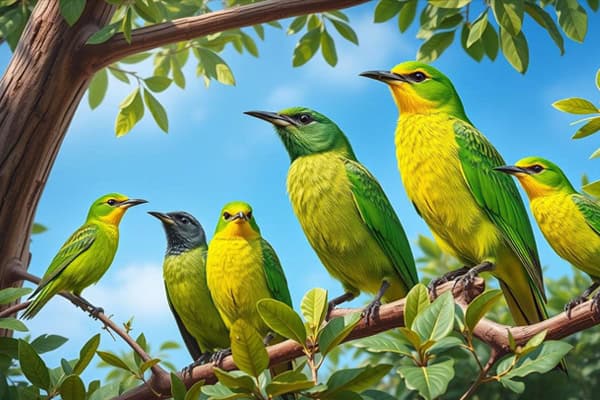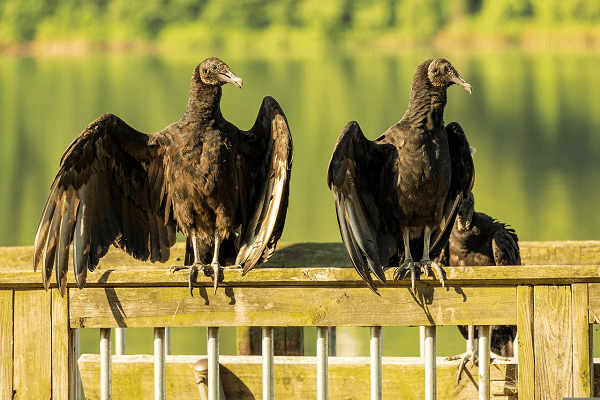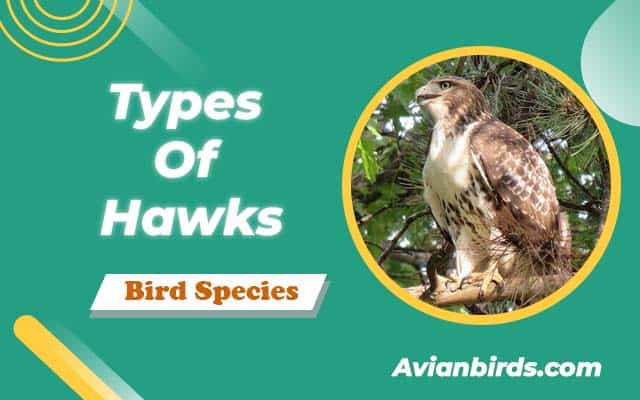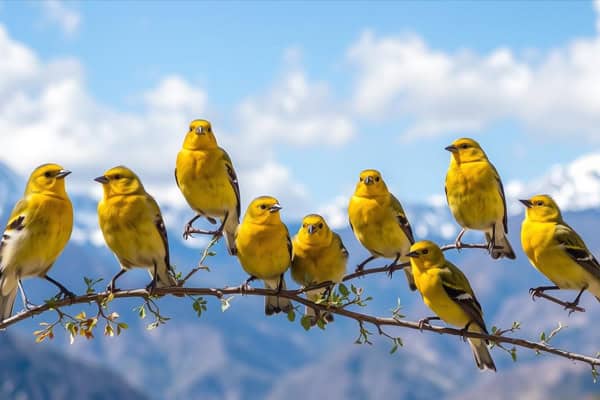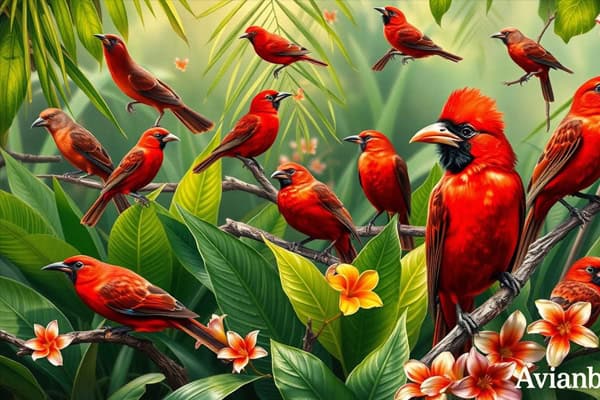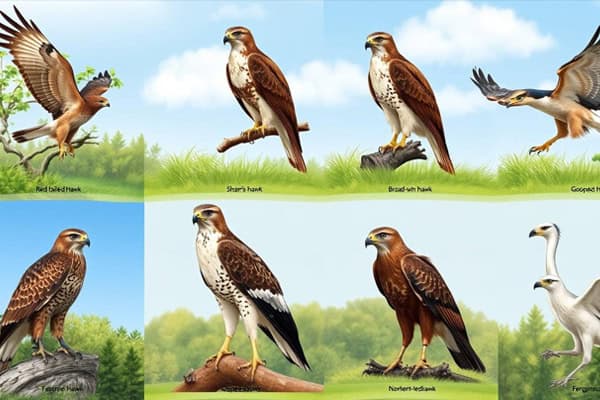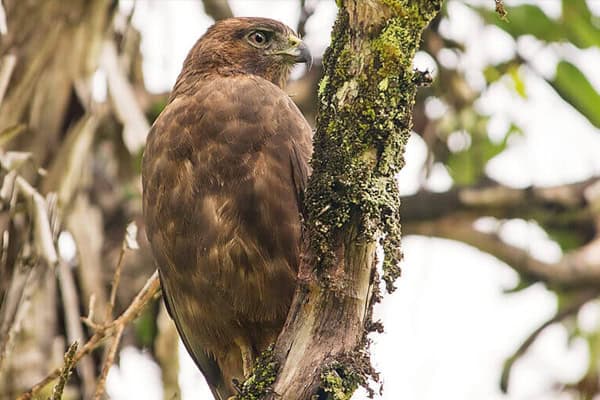10 Types of Green Birds in Sarasota Florida (With Pictures)
Did you know nearly one-third of Sarasota, Florida birds have bright green feathers? This fact shows how rich in life the area is, especially with green birds. They are not just pretty to look at but also play a big role in nature. Let’s dive into the world of green birds in Sarasota, focusing on the native species that make it a top spot for birdwatching and photography.
Let’s explore the beauty and habits of these captivating birds together. We’ll use vivid pictures to bring nature closer to us. Whether you love birdwatching or are new to bird photography, Sarasota has a lot to offer.
Common Green Birds Found in Sarasota Florida
- Green Heron
- Painted Bunting
- Ruby-throated Hummingbird
- Green-Winged Teal
- Monk Parakeet
- Red-Masked Parakeets
- Nanday Parakeets
- Red-eyed Vireo
- Black-throated Green Warbler
- Tennessee Warbler
1. Green Heron
- Scientific Name: Butorides virescens
- Size: 51–61 cm (20–24 in)
- Weight: 250–400 g (8.8–14.1 oz)
- Lifespan: 5–10 years
- Diet: Fish, amphibians, crustaceans, and insects
The Green Heron (Butorides virescens) is a birdwatcher’s delight with its amazing hunting skills. It lives in many wetland areas. It shows how patience and precision are key in hunting.
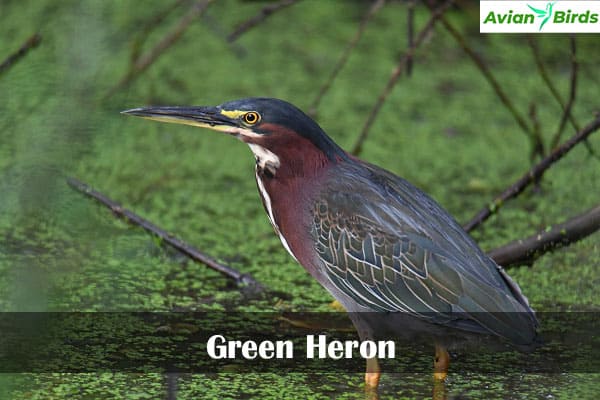
Habitat and Behavior
Green Herons like to live in peaceful places like ponds, marshes, and swamps. Their blue-green feathers help them hide well. Watching them is very rewarding.
They are both stealthy and watchful, waiting for long times to catch fish. This makes them interesting to observe.
Diet and Feeding Techniques
Green Herons eat small fish, crayfish, and insects. They have clever ways to hunt. They use sticks or insects as bait to catch fish.
This helps keep the fish population in check and supports the ecosystem.
Conservation Status
Even though the Green Heron is adaptable, it faces threats of losing its home. This shows why we need to protect their habitat. Saving this bird helps keep its ecosystem healthy.
2. Painted Bunting
- Scientific Name: Passerina ciris
- Size: 12.5–14 cm (4.9–5.5 in)
- Weight: 11–20 g (0.39–0.71 oz)
- Lifespan: 3–5 years (up to 10 years in the wild)
- Diet: Seeds, fruits, and insects
The Painted Bunting is a stunning bird known for its bold colors and lively behavior. It’s fascinating to see the differences in plumage between males and females. These differences go beyond just color, affecting their roles in breeding and nesting.
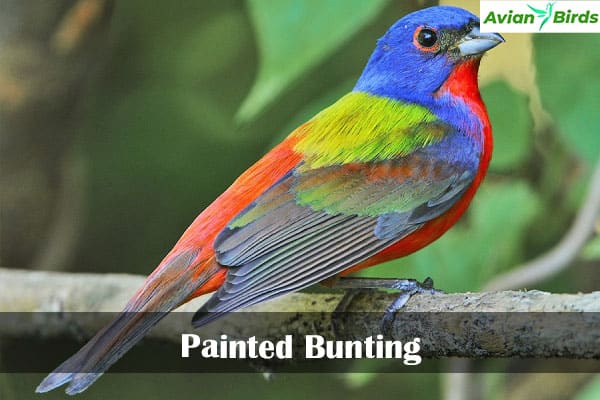
Male vs. Female Plumage
The male Painted Bunting has vibrant colors like blue, green, and red. This makes it one of the most striking songbirds in North America. Females and young males, on the other hand, have a more subdued green color, known as “greenies.” This difference can sometimes confuse or intrigue birdwatchers, making it important to learn how to tell them apart.
Breeding and Nesting Habits
During the breeding season, males show off their bright colors to attract females. Also, They build nests in shrubs or low trees. Both parents take turns incubating their eggs, showing their dedication to their young. Watching these behaviors gives us insight into their reproductive habits.
Where to Spot Them
We often see Painted Buntings green Birds in shrubby areas and woodlands in Sarasota Florida, especially during winter. These birds are a delight for birdwatchers. To increase your chances of seeing them, visit local parks and nature reserves in the winter.
| Aspect | Male | Female |
|---|---|---|
| Plumage Coloration | Vivid blue, green, and red | Uniform green (“greenies”) |
| Nesting Behavior | Colorful displays to attract | Involved in incubation |
| Habitat Preference | Shrubby habitats | Shrubby habitats |
| Peak Observation | During breeding season | Winter months |
3. Ruby-throated Hummingbird
- Scientific Name: Archilochus colubris
- Size: 7.5–9 cm (3–3.5 in)
- Weight: 2–4 g (0.07–0.14 oz)
- Lifespan: 3–5 years (up to 9 years in the wild)
- Diet: Nectar from flowers, small insects, and spiders
The Ruby-throated Hummingbird is a standout in the bird world. Its bright colors and unique behavior make it a joy to watch. Learning how to identify these birds can make birdwatching more exciting. Their distinct traits make them easy to spot.
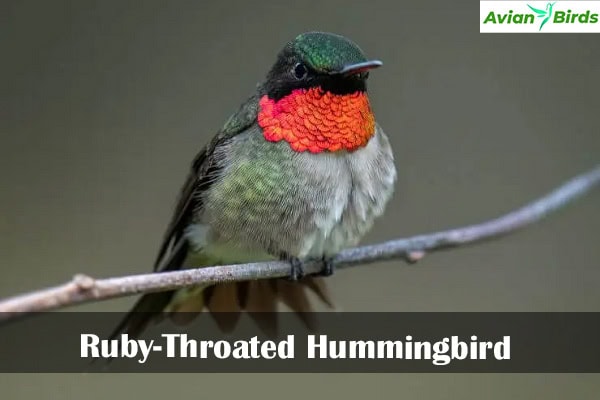
Identification Features
The male Ruby-throated Hummingbird is known for its bright red throat. This color stands out against its dark green back. Females are less flashy, but still beautiful with their green and gray feathers. Knowing how to spot these traits helps us enjoy their beauty and learn more about them.
Feeding Preferences and Nectar Sources
Ruby-throated Hummingbirds love nectar-rich flowers. They eat nectar from many flowers, helping with pollination. They also visit hummingbird feeders with sugar water. Because they burn energy fast, they eat often to keep going.
| Feature | Male | Female |
|---|---|---|
| Coloration | Vibrant red throat, dark green back | Subdued green and gray |
| Nectar Sources | Preferred nectar-rich flowers | Preferred nectar-rich flowers |
| Feeding Method | Frequent visits to feeders and flowers | Frequent visits to feeders and flowers |
4. Green-Winged Teal
- Scientific Name: Anas crecca
- Size: 34–38 cm (13–15 in)
- Weight: 250–400 g (8.8–14.1 oz)
- Lifespan: 5–10 years
- Diet: Aquatic plants, seeds, and small invertebrates
The Green-Winged Teal is a stunning duck with fascinating mating behaviors. They show off their beauty and unique actions during mating seasons. These ducks have eye-catching displays that grab attention and show off their vibrant traits.
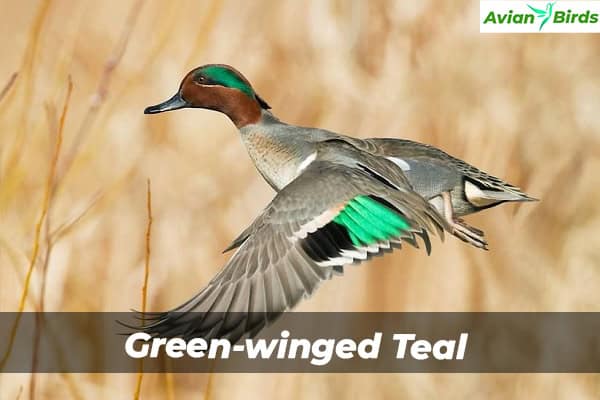
Mating Displays and Breeding
During breeding, male Green-Winged Teal show off with amazing courtship behaviors. They show off their green eye patch and do special moves, like short flights and unique calls. These actions are key to attracting females and winning over other males.
The success of their mating depends a lot on these visual and sound displays. This makes their breeding behaviors very important for their survival.
Preferred Habitats During Migration
Green-winged teal migrate to shallow lakes, tidal marshes, and estuaries. These places are vital for them in the winter for eating and resting. Watching their migration shows how adaptable they are to different places.
Knowing where these ducks live helps us understand their needs in the wild.
Non-native Parakeets: Colorful Inhabitants
In Sarasota, the lively presence of non-native parakeets enriches our avian community. The Monk Parakeet stands out for its unique behaviors and social characteristics. These social birds thrive in urban and suburban settings, contributing to local feral populations. Their intricate nests and playful nature make them a delight to observe in our neighborhoods.
5. Monk Parakeet
- Scientific Name: Myiopsitta monachus
- Native Range: South America
- Notable Info: Known for their complex nests and social behavior. They have established large populations in urban areas across North America and Europe.
The Monk Parakeet (Myiopsitta monachus) is known for its sociable demeanor and intelligence. These birds often gather in flocks, creating a lively atmosphere wherever they gather.
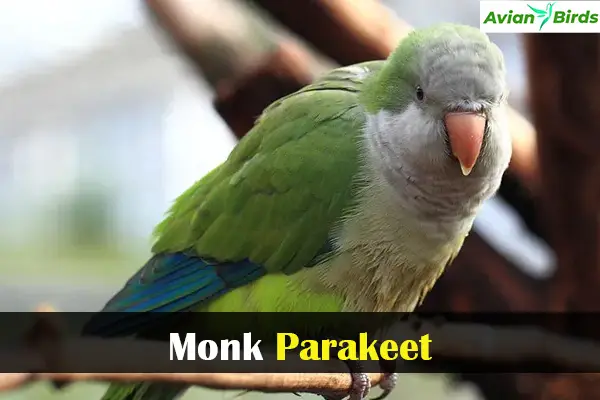
Their nests, built from twigs and branches, resemble large, complex structures typically found in trees or on utility poles. Understanding Monk Parakeet behavior reveals their adaptability and the social networks they form within their groups. Observing these feral populations can offer a glimpse into their vibrant community life.
6&7 Red-Masked and Nanday Parakeets
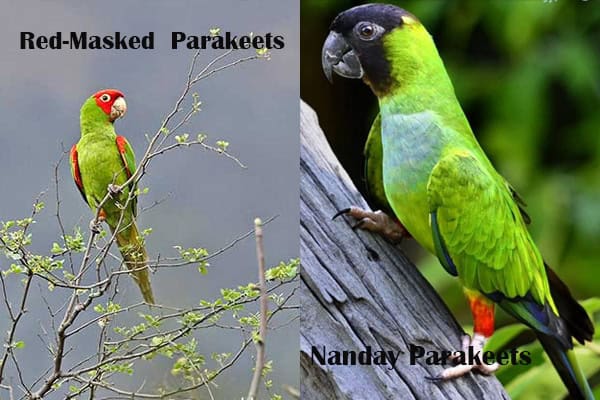
In addition to Monk Parakeets, we often see the Red-Masked (Psittacara erythrogenys) and Nanday Parakeets (Aratinga nenday) in local areas. Both add to the colorful tapestry of our local environment. While they share similarities with the Monk Parakeet regarding social structures and adaptability, each species showcases unique traits and preferences. The Red-Masked Parakeet is recognized for its striking red facial markings, while the Nanday Parakeet boasts a distinctive dark mask and vibrant yellow body. Together, they highlight the charm of feral parakeets in Florida.
| Parakeet Species | Scientific Name | Distinct Features | Habitat Preferences |
|---|---|---|---|
| Monk Parakeet | Myiopsitta monachus | Bright green plumage, intricate nests | Urban areas, parks |
| Red-Masked Parakeet | Psittacara erythrogenys | Red facial markings, green body | Wooded areas, suburbs |
| Nanday Parakeet | Aratinga nenday | Dark face, yellow underparts | Tropical and subtropical regions |
Other Possible Green Birds in Sarasota Florida
Sarasota is home to many exciting green birds for birdwatchers. These birds stand out with their unique looks and behaviors. Let’s explore three green birds you might see in the area.
8. Red-eyed Vireo
- Scientific Name: Vireo olivaceus
- Size: 14–15 cm (5.5–6 in)
- Weight: 18–30 g (0.63–1.06 oz)
- Lifespan: 5–10 years
- Diet: Primarily insects and berries; known for its varied diet, including fruits and seeds.
The Red-eyed Vireo has an olive-green back and bright red eyes. It lives in deciduous forests and shrubs, making Sarasota a great place to see it. Bird lovers enjoy watching it search for food among the leaves, singing all day.

To spot a Red-eyed Vireo, look for its bright red eyes and olive-green feathers.
9. Black-throated Green Warbler
- Scientific Name: Setophaga virens
- Size: 12.5–14 cm (4.9–5.5 in)
- Weight: 9–12 g (0.32–0.42 oz)
- Lifespan: 3–8 years
- Diet: Insects, spiders, and berries; primarily forages in trees and shrubs.
The Black-throated Green Warbler is known for its green back and black throat. It moves through Florida with the seasons, so birdwatchers can see it more often. This warbler is active, in hunting insects in the treetops.

Knowing when it migrates adds to the fun of watching these birds in Sarasota.
10. Tennessee Warbler
- Scientific Name: Leiothlypis peregrina
- Size: 11–13 cm (4.3–5.1 in)
- Weight: 9–12 g (0.32–0.42 oz)
- Lifespan: 3–5 years
- Diet: Primarily insects, particularly caterpillars, as well as berries and fruits.
The Tennessee Warbler is another bird to watch for. It has a greenish color and gray head. Birdwatchers see it during migration, especially in wooded places and gardens.
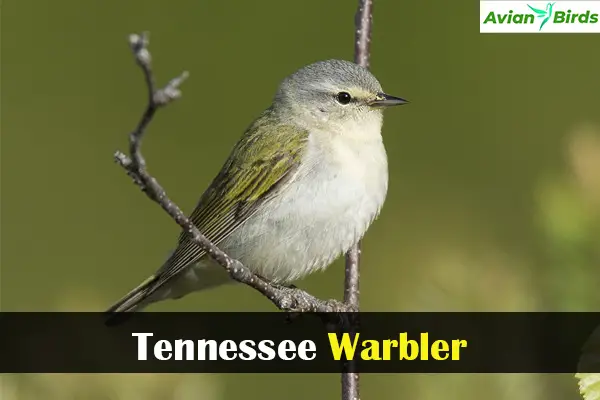
This bird adapts well to its surroundings, making it a great find for birdwatchers.
| Bird Species | Identification Features | Habitat | Migration Patterns |
|---|---|---|---|
| Red-eyed Vireo | Olive-green back, red eye | Deciduous forests, shrubby areas | Year-round resident in Sarasota |
| Black-throated Green Warbler | Black throat, green back | Treetops in forests | Migrates through Florida in spring and fall |
| Tennessee Warbler | Green body, gray head | Wooded areas and gardens | Migrates through during spring and fall |
Best Times for Birdwatching in Sarasota
Birdwatching of Green Birds in Sarasota Florida is a year-round joy. It’s important to use a birdwatching calendar to know when to look for different species. Each season brings its own set of birds, each with unique behaviors.
Spring and fall are great for seeing migratory birds. Many species come and go, making it exciting. March and April are good for seeing birds nest and mate. September and October are when they head south, offering great views of their migration.
In summer, some birds are harder to find, but the Green Heron is more active. Early morning or late afternoon are the best times to see them. Winter is quiet, but it’s a good time to see non-native parakeets enjoying the weather.
Here’s a simple table to help us know the best times for birdwatching:
| Season | Best Months | Notable Species |
|---|---|---|
| Spring | March, April | Painted Bunting, Ruby-throated Hummingbird |
| Summer | June, July | Green Heron, Resident Parakeets |
| Fall | September, October | Seasonal Species, Migrants |
| Winter | December, January | Non-native Parakeets |
Using our birdwatching calendar with these seasonal tips makes our adventures in Sarasota more exciting and fulfilling.
How to Attract Green Birds to Your Yard
Creating a welcoming space for green birds in our yards can make birdwatching more exciting. We can do this by choosing the right bird feeders and seeds. Knowing their eating habits helps us attract these beautiful birds.
Best Bird Feeders and Seed Choices
Choosing the right bird feeders and seeds is key to drawing in green birds. Here are some top picks:
- Tube Feeders: Perfect for small birds like the Painted Bunting, these feeders offer thistle and sunflower seeds.
- Platform Feeders: Great for bigger birds, these open feeders let them enjoy a mix of seeds.
- Suet Feeders: Suet feeders attract birds like the Ruby-throated Hummingbird and give them the energy they need.
Creating a Bird-Friendly Environment
We can also make our yards bird-friendly by using landscaping tips. Here are some ways to do it:
- Plant Native Flora: Planting native flowers and shrubs gives birds natural food throughout the seasons.
- Water Sources: Birdbaths or small ponds draw in green birds looking for water.
- Shelter: Adding dense shrubs or trees gives birds places to nest and hide from predators.
By using the right bird feeders and seeds, we can make our yards a haven for green birds. This not only attracts these lovely birds but also brightens our outdoor spaces.
Photographing Green Birds: Tips and Tricks
Capturing green birds in their natural habitats is rewarding. Let’s look at key bird photography tips for stunning images of these vibrant creatures.
The time of day matters in bird photography. Dawn and the late afternoon golden hour offer soft lighting. This makes the birds’ green plumage look more vivid.
Camera settings are key. A fast shutter speed freezes motion, important for birds in flight or feeding. A higher ISO helps in low light. A medium aperture setting keeps the bird and background sharp.
Using a telephoto lens gets us close to green birds without scaring them. A tripod or monopod helps with slow shutter speeds.
Here is a table outlining key settings and considerations for photographing green birds:
| Aspect | Recommendation |
|---|---|
| Time of Day | Early morning or late afternoon |
| Shutter Speed | 1/1000 sec or faster |
| ISO | 800 or higher in low light |
| Aperture | f/5.6 to f/8 for depth of field |
| Lens Type | Telephoto lens (200mm or more) |
With these tips, we can get better at capturing green birds. Trying different settings and techniques will improve our photos and make them fun.
Read More🐦Related Articles:
| Types of Conures |
| Apple Cider Vinegar In Bird Baths |
| Scary Bird Species |
| Blue Colored Birds |
| Largest Birds of Prey |
Conclusion
Green birds in Sarasota Florida bring a special charm to our area. From the quiet Green Heron to the bright Painted Bunting, each bird adds to the beauty of our skies. Birdwatching lets us enjoy their beauty and connect more with nature.
Birdwatching is a great way to appreciate nature. When we explore places like local parks, we should think about helping protect these birds. Knowing where they live and what they do helps us keep them safe and our environment healthy.

